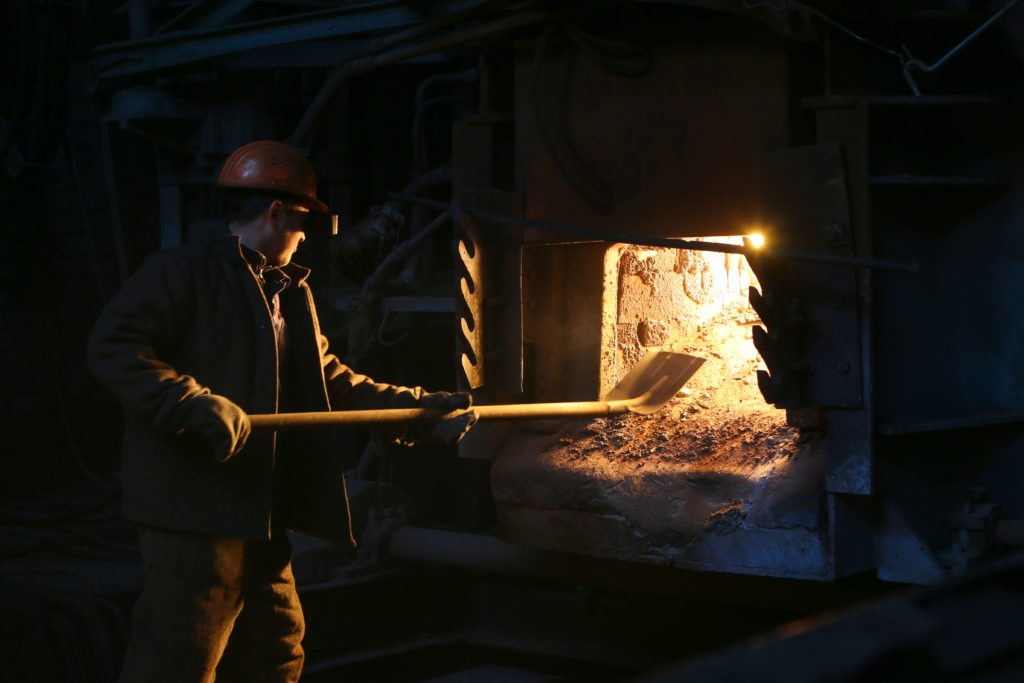Turning iron into steel
The discovery that a tiny bit of carbon turned iron into steel was a long and gradual process. The first people to make steel were probably the Hittites in Anatolia (modern-day Turkey) around 2000 BC. They found that by adding charcoal to iron ore, they could produce a harder and stronger material than pure iron.
The Hittites however, probably didn’t understand why adding charcoal to iron ore increased the carbon content to between zero and one percent, and it wasn’t until the 17th century that scientists began to study the properties of steel in more detail.
In the 1660s, the English scientist Robert Boyle found that steel was a mixture of iron and carbon. He also found that the amount of carbon in steel affected its properties. Steel with a higher carbon content was harder and stronger, but it was also more brittle. Steel with a lower carbon content was softer and more ductile, but it was also less strong.
Most famously, the English scientist Henry Bessemer developed a process In the 18th century for making steel that was much faster and cheaper than the traditional methods. This process, known as the Bessemer process, revolutionized the steel industry.
Bessemer Process
Founders had always known that massive air flow to the hearth led to higher temperatures which melted things, like iron and copper, that were hard to melt. It made steel more affordable and accessible, and it led to the development of many new technologies, such as the railroads and the steam engine.
In the 19th century, the German scientist Robert Mushet developed a process for making steel that was even stronger than Bessemer steel. This process, known as the Mushet process, used a combination of iron, carbon, and manganese to create a steel that was both strong and tough.
In the 20th century, the development of new steelmaking technologies, such as the open-hearth furnace and the electric arc furnace, led to the production of even higher-quality steel. Today, steel is an essential material in many industries, and it is used to make everything from cars and buildings to bridges and airplanes.
The discovery that a tiny bit of carbon turned iron into steel was a major breakthrough in the history of technology. It led to the development of many new technologies and industries, and it has had a profound impact on the world we live in today.
The discovery that a tiny bit of carbon turned iron into steel was a long and gradual process. The first people to make steel were probably the Hittites in Anatolia (modern-day Turkey) around 2000 BC. They found that by adding charcoal to iron ore, they could produce a harder and stronger material than pure iron. However, they didn’t understand why this worked, and it wasn’t until the 17th century that scientists began to study the properties of steel in more detail.
In the 1660s, the English scientist Robert Boyle found that steel was a mixture of iron and carbon. He also found that the amount of carbon in steel affected its properties. Steel with a higher carbon content was harder and stronger, but it was also more brittle. Steel with a lower carbon content was softer and more ductile, but it was also less strong.
In the 18th century, the English scientist Henry Bessemer developed a process for making steel that was much faster and cheaper than the traditional methods. This process, known as the Bessemer process, revolutionized the steel industry. It made steel more affordable and accessible, and it led to the development of many new technologies, such as the railroads and the steam engine.
In the 19th century, the German scientist Robert Mushet developed a process for making steel that was even stronger than Bessemer steel. This process, known as the Mushet process, used a combination of iron, carbon, and manganese to create a steel that was both strong and tough.
In the 20th century, the development of new steelmaking technologies, such as the open-hearth furnace and the electric arc furnace, led to the production of even higher-quality steel. Today, steel is an essential material in many industries, and it is used to make everything from cars and buildings to bridges and airplanes.
The discovery that a tiny bit of carbon turned iron into steel was a major breakthrough in the history of technology. It led to the development of many new technologies and industries, and it has had a profound impact on the world we live in today.
It is difficult to say exactly when man discovered the hearth where forcing more air flow could melt stuff. However, it is likely that this discovery was made sometime in the Neolithic period, when humans began to develop more sophisticated methods of cooking and metalworking.
The first hearths were probably simple pits dug into the ground and lined with stones. These hearths would have been used to cook food over an open fire. However, it is likely that people soon realized that by blowing air into the fire, they could make it hotter and more efficient. This would have allowed them to melt metals such as copper and bronze, which were essential for making tools and weapons.
The development of the hearth was a major breakthrough in human history. It allowed people to cook food more easily and efficiently, and it also opened up the possibility of metalworking. These advances had a profound impact on human development, and they helped to lay the foundation for the modern world.

